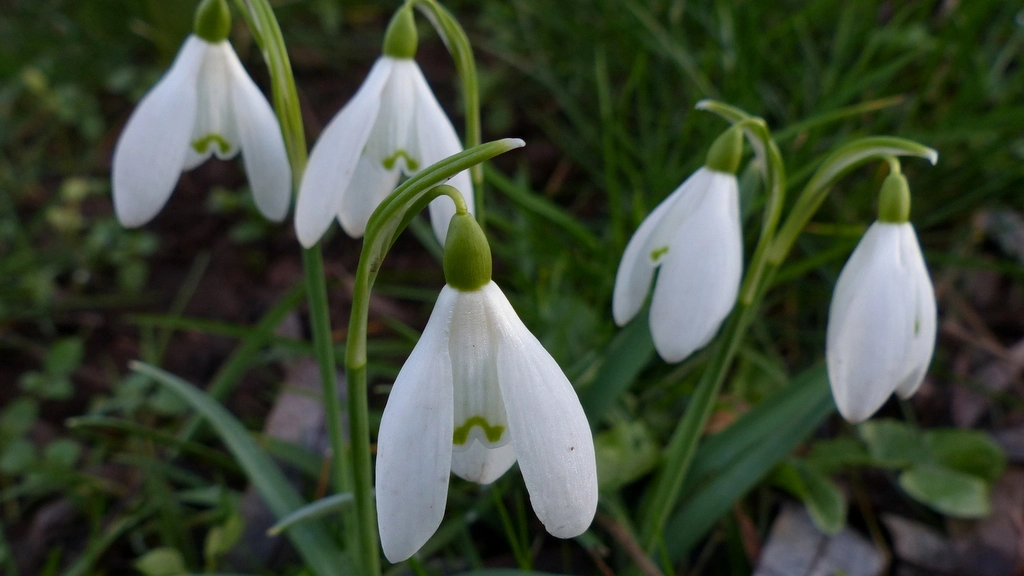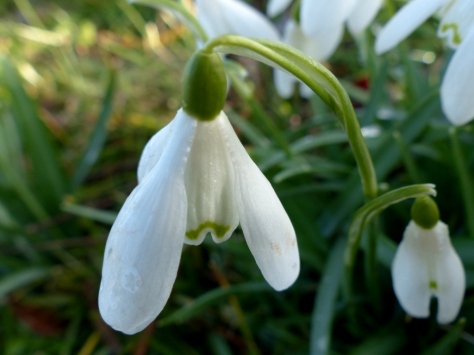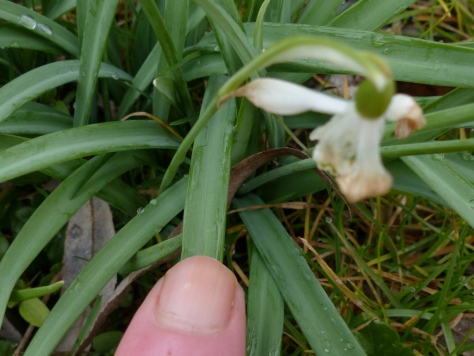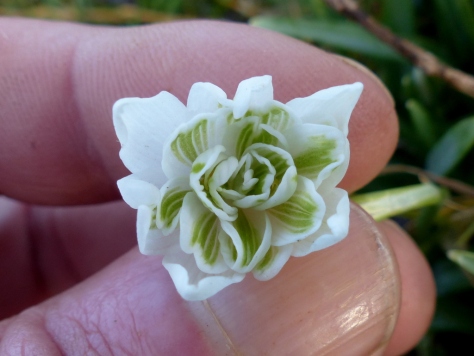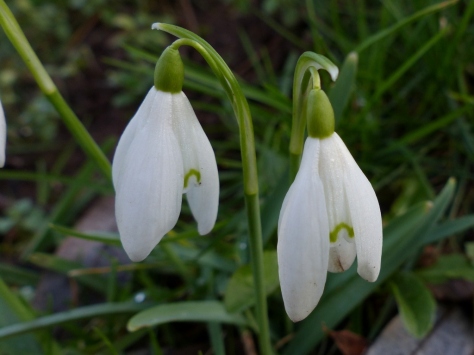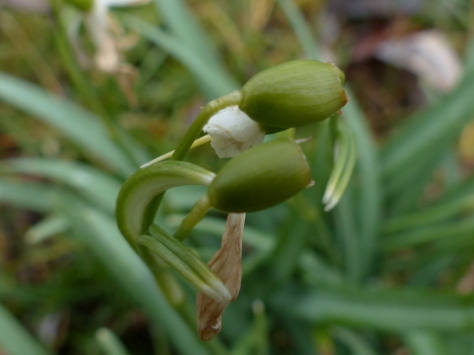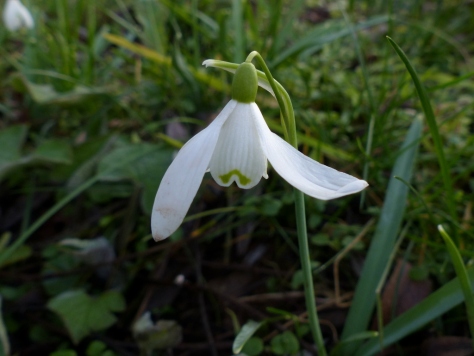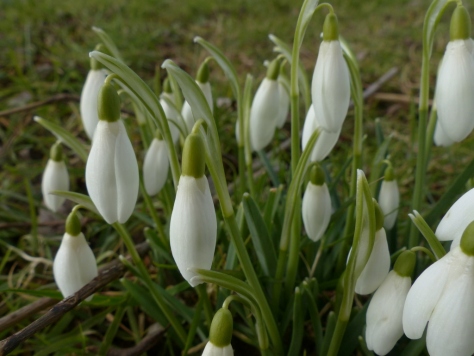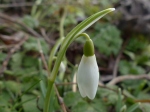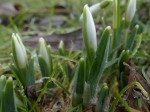The Common Snowdrop isn’t native to the UK it is naturalised, that means that it is an introduced species that probably arrived here around about the sixteenth century and has been here ever since. Most people think of it as a native species today.
Galanthus nivalis is native to most of Europe and that is where we got it from.
There are twenty species of Galanthus Snowdrops native to Europe, the last one only being identified in 2012. They all look very similar but the most common species is G. nivalis, the Common Snowdrop.
Identifying the Common Snowdrop:
Galanthus nivalis has narrow leaves (6mm or less) all of the other known species have leaves at least 9mm wide.
So there is a simple rule of thumb.
If the leaf blade is thinner than your little finger nail then it is Galanthus nivalis, if it is wider then it is one of the others.
It is very easy to identify the plant as G. nivalis but the fun doesn’t stop there.
There are dozens of garden varieties that have been cultivated from G. nivalis and so they all have the same narrow leaves. They have names like Galanthus nivalis “Green Tear.” These varieties have been selected because they have some striking difference to the Common Snowdrop and usually that concerns colour or shape.
The flower of the Common Snowdrop is composed of six “tepals.”
(Tepal is a word that we use when the petals and the sepals appear the same or are performing the same function)
The three outer tepals are plain white. The three inner tepals are half the length of the outer ones and they have a green mark at the tip that looks like a little bridge.
 To complicate matters further there is a double Common Snowdrop that grows in the wild and can often be found growing amongst the single flowers. It is called Galanthus nivalis f. pleniflorus “Flore Pleno.”
To complicate matters further there is a double Common Snowdrop that grows in the wild and can often be found growing amongst the single flowers. It is called Galanthus nivalis f. pleniflorus “Flore Pleno.”
 From this species, many more double and semi-double garden varieties have been cultivated and they are all Galanthus nivalis.
From this species, many more double and semi-double garden varieties have been cultivated and they are all Galanthus nivalis.
So to summarise my “Easy” identification guide: If the leaf blade is thinner than your little finger nail, then it is Galanthus nivalis and if it has that little green bridge mark and nothing else, then it is almost certainly just a Common Snowdrop.
If you would like to view some of the many variations on this theme then I would recommend a visit to Judy’s Snowdrops. My link will take you to a page showing G. nivalis cultivars but the whole web site is worth exploring if you have the time.
There is one other identification feature that I should mention, The leaves of the Common Snowdrop face each other like a pair of hands clapped together, in a few species the leaves wrap around each other at the very base. I think that for our purposes this is a bit academic, it is enough to do the finger nail test.
NB: If you find one with leaves broader than your little finger nail then it is not Galanthus nivalis and you should take it’s photograph.
The Common Snowdrop description:
The Common Snowdrop has a single flower on a stem (sometimes called a “scape”). As the flower breaks through the ground it is protected by two bracts with hardened tips and the flower lies between them enclosed in a papery spathe.
 As the flower grows it breaks free of it’s paper casing, The bracts will hang above the flower now, usually with the upper side of the spathe intact.
As the flower grows it breaks free of it’s paper casing, The bracts will hang above the flower now, usually with the upper side of the spathe intact.
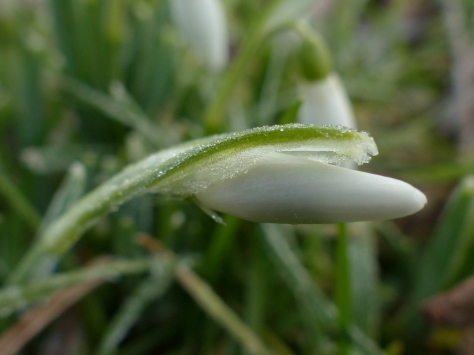 The flower is composed of six tepals, (petals) three outer and three inner. The outside tepals are white. The inner tepals are half as long as the outer and bear a green mark that looks like a little bridge.
The flower is composed of six tepals, (petals) three outer and three inner. The outside tepals are white. The inner tepals are half as long as the outer and bear a green mark that looks like a little bridge.
The inside of a Common Snowdrop looks like this.
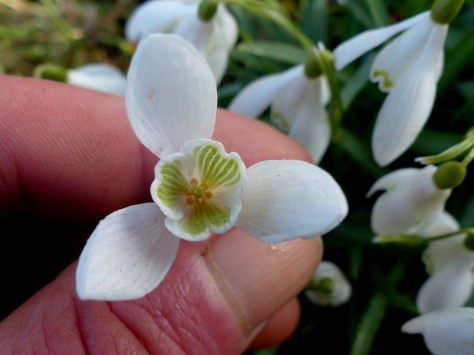 There are six anthers, covered in orange pollen which surround a single style.
There are six anthers, covered in orange pollen which surround a single style.
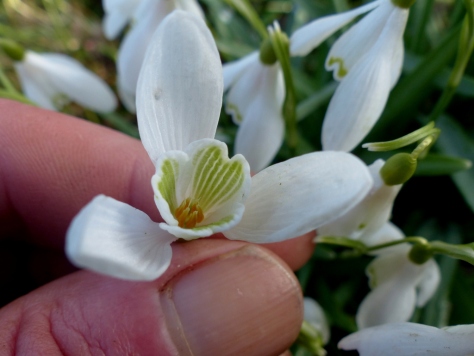 You can see the style better in this next photograph.
You can see the style better in this next photograph.
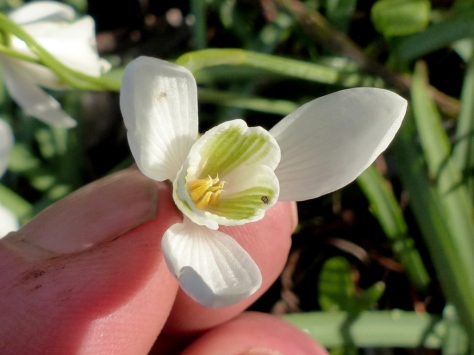 The ovary (where the seeds are produced) is the green bulb at the base of the flower.
The ovary (where the seeds are produced) is the green bulb at the base of the flower.
 This is the fruit of the Snowdrop, it will contain two or three seeds. The flowers die and drop off in early March and the leaves die back soon after but the seeds won’t be ripe until June. Until that time the fruit will lie on the ground, it will yellow when it is ripe and then it will open.
This is the fruit of the Snowdrop, it will contain two or three seeds. The flowers die and drop off in early March and the leaves die back soon after but the seeds won’t be ripe until June. Until that time the fruit will lie on the ground, it will yellow when it is ripe and then it will open.
The French call this little flower perce-neige which literally translates as pierce-snow. The tips of the leaves are hardened to allow them to break through the cold frosty ground.
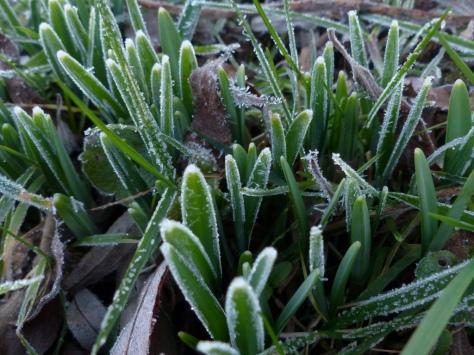 Unlike the Primrose, Early Crocus and Coltsfoot, I can’t really see this flower as one of the “first signs of spring,” it doesn’t wait for spring, it flowers in the winter.
Unlike the Primrose, Early Crocus and Coltsfoot, I can’t really see this flower as one of the “first signs of spring,” it doesn’t wait for spring, it flowers in the winter.
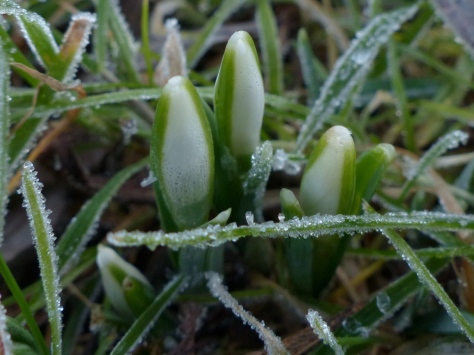 Kew Gardens have been monitoring the arrival of the first Snowdrops since the 1950’s and at that time Snowdrops opened late in February, by the 1990’s they were opening in January. In 2014 Kew announced their first Snowdrops on December 5th. Winters really are warming up.
Kew Gardens have been monitoring the arrival of the first Snowdrops since the 1950’s and at that time Snowdrops opened late in February, by the 1990’s they were opening in January. In 2014 Kew announced their first Snowdrops on December 5th. Winters really are warming up.
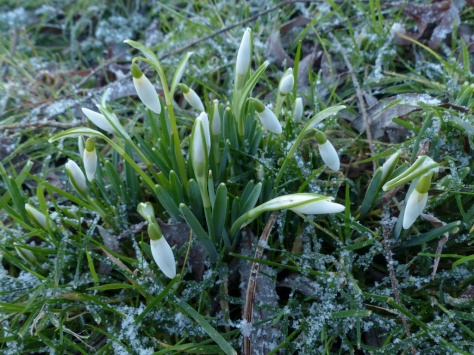 The Snowdrop flowers very early in the year, when there are few pollinating insects around, as a result the plant usually spreads by vegetative means (from the small bulblets that form at the base of the main bulb) rather than from seed production. However they will last into March and do provide a very valuable source of nectar and pollen for early Bumblebees, Honeybees and other insects.
The Snowdrop flowers very early in the year, when there are few pollinating insects around, as a result the plant usually spreads by vegetative means (from the small bulblets that form at the base of the main bulb) rather than from seed production. However they will last into March and do provide a very valuable source of nectar and pollen for early Bumblebees, Honeybees and other insects.
Snowdrops react to the sun. On a warm sunny day they open their outer tepals wide and release a scent that is like warm honey. They are doing their best to attract any insects that are around.
Kingdom: Plantae
Order: Asparagales
Family: Amaryllidaceae
Genus: Galanthus
Species: Galanthus nivalis
